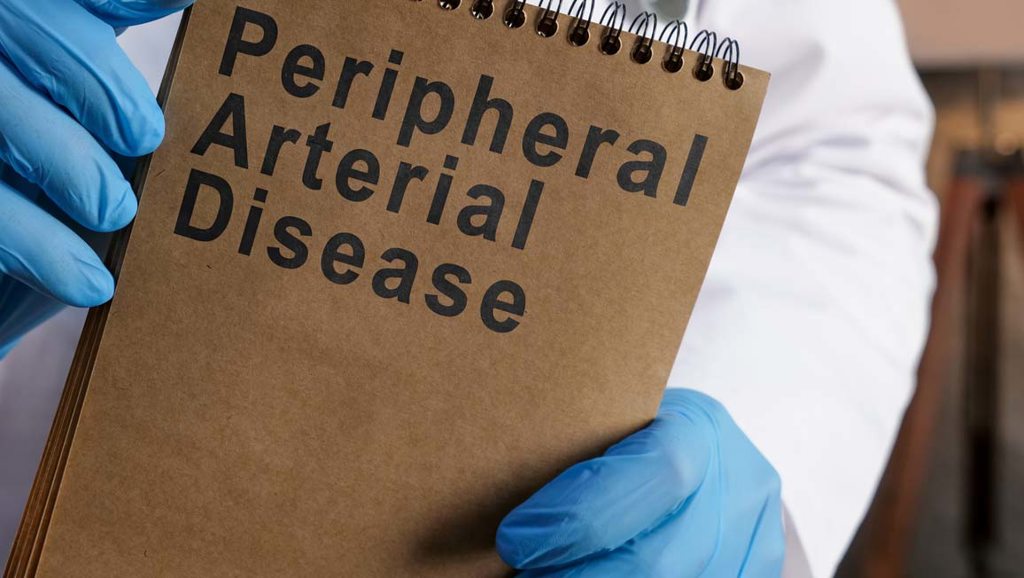Penn Highlands Healthcare Recognizes Peripheral Artery Disease (PAD) Awareness Month
Penn Highlands Healthcare joins the national effort in commemorating September as Peripheral Artery Disease (PAD) Awareness Month, which is dedicated to raising awareness about PAD prevention strategies, diagnosis, and treatment — especially when associated with non-healing wounds.
According to the PAD Pulse Alliance, peripheral artery disease is a common yet often under-recognized condition that affects more than 10 million Americans and is a factor in 400 amputations each day. With this disorder, the arteries that supply blood to the limbs become narrowed or blocked due to atherosclerosis — a build-up of fatty deposits on the artery walls. This reduced blood flow can cause a range of symptoms, from leg pain during walking (claudication) to more severe complications such as non-healing wounds or ulcers.

PAD often goes unnoticed in its early stages because its symptoms can be mild or mistaken for other conditions. However, if left untreated, it can lead to significant health problems. It is crucial to recognize the signs early and seek appropriate treatment.
One of the most concerning aspects of PAD is its effect on wound healing. The reduced blood flow associated with PAD means that wounds and ulcers in the legs and feet can become chronic and difficult to heal primarily due to:
- Reduced Oxygen and Nutrients: Blood carries oxygen and essential nutrients necessary for cell repair and wound healing. In PAD, the compromised blood flow means that these critical elements do not reach the wound site effectively.
- Impaired Immune Response: A diminished blood supply can also weaken the immune response in the affected area, making it harder for the body to fight off infections that can further impede healing.
- Increased Risk of Infection: Slow-healing wounds are more susceptible to infections, which can intensify the problem and lead to more serious complications.
- Complications: In severe cases, chronic wounds associated with PAD can lead to conditions such as gangrene, potentially resulting in amputation if not managed properly.
Understanding the risk factors of PAD such as smoking, diabetes, high blood pressure and high cholesterol can help individuals take preventive measures. Recognizing the symptoms, such as leg pain or numbness, is crucial for early diagnosis. Regular check-ups are also important. People with risk factors should have regular check-ups with their healthcare provider to monitor vascular health and address any concerns promptly.
Moreover, for those with PAD, proper wound care is essential. Keeping wounds clean, monitoring for signs of infection and seeking medical advice early can prevent complications. Specialized wound centers such as those offered throughout Pennsylvania by Penn Highlands Healthcare can offer advanced treatments to promote proper treatment and healing. The wound care experts at Penn Highlands Healthcare are dedicated to healing patients with chronic and difficult wounds that stem from diabetes, trauma, paralysis, circulatory problems or burns. The clinical staff thoroughly assesses each patient’s chronic wound, including any underlying causes. After each assessment, the treatment plan is individualized to meet the specific needs of that patient.
Penn Highlands Healthcare offers:
- Advanced wound dressing
- Infection assessment
- Infection intervention
- Pressure offloading
- Pressure relief
- Removal of infected tissue
- Sharp debridement
- Specialized compression dressings
- Topical medicine treatments
- Vascular assessment/testing
- Wound cleansing
Penn Highlands Healthcare also offers hyperbaric oxygen therapy (HBOT) at some locations. HBOT is a non-invasive treatment in which the patient breathes 100% oxygen while at an increased atmospheric pressure. HBOT is administered in a fully enclosed chamber under direct medical supervision. As the amount of pressure increases, the amount of oxygen available to the tissues increases which ultimately helps promote healing.
“Injured tissue needs an adequate supply of oxygenated blood to heal properly,” explained Forozan Navid, MD, a board-certified cardiovascular surgeon at Penn Highlands Cardiovascular and Thoracic Surgery. “When certain factors diminish the oxygen supply, HBOT can be used to deliver the needed oxygen to heal the wounds. It can be an effective therapy to help the healing in people with PAD and/or other vascular diseases, diabetes and poor circulation.”
Other ways to enhance blood flow and overall vascular health include adopting a healthier lifestyle such as quitting smoking, maintaining a balanced diet and engaging in regular exercise.
By understanding the connection between PAD and wound complications, and by taking proactive steps to manage the condition, individuals can significantly improve their quality of life and prevent severe outcomes.
If you, or a loved one, have signs of PAD or a wound that will not heal, visit www.phhealthcare.org/woundcare/

